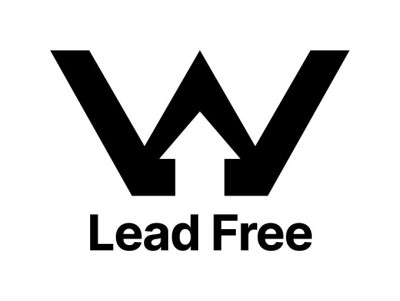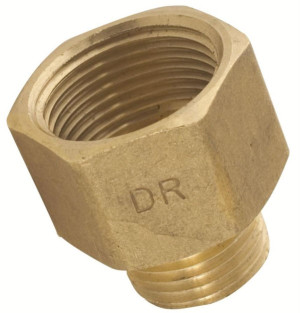Lead-free and dezincification resistant copper alloy plumbing products
As part of the 2022 Building Code update, Acceptable Solution G12/AS1 Water Supplies was amended to limit the maximum allowable lead content and set out corrosion resistance properties in certain plumbing products.
Lead-free and dezincification resistant plumbing products
As part of the 2022 Building Code update consultation, the Ministry of Business, Innovation and Employment (MBIE) proposed to limit the allowable lead content in plumbing products which contain copper alloys and are intended for use in contact with potable water.
This consultation also proposed clarifying that copper alloy water supply system components must be dezincification resistant to reduce the risk of corrosion. Following high levels of support, MBIE decided to proceed with the proposed changes to Acceptable Solution G12/AS1.
Transition period extensions
In April 2024, MBIE consulted on extending the transition period end dates for both the lead and dezincification plumbing product provisions in New Zealand. Due to the positive response to the proposed changes, MBIE has announced that the transition period will end on 1 May 2026, with the proposed changes taking effect from 2 May 2026.
Read more about the Building Code update consultation outcomes.
Building consent applications and the transition period end date
The information below explains how the transition period end date should be applied.
Consents granted before the transition period ends
For building consents granted by a building consent authority (BCA) on or before 1 May 2026 (including consented projects under construction), the building work may proceed using the acceptable solution provisions that were approved by the building consent.
Consent applications made before the transition period ends
Building consent applications that have been made on or before 1 May 2026 may continue to comply with the acceptable solution provisions that were in place on the date the consent application was made.
Consent applications made after the transition period ends
Building consent applications made on or after 2 May 2026 must follow the updated provisions when using the acceptable solutions as a means of compliance.
Building work that does not require a consent
For building work exempt from requiring a building consent under Schedule 1 of the Building Act 2004, the person who carries out the work (eg the plumber) is responsible for ensuring that the products and methods used in carrying out the work comply with the requirements that are in effect at the time of installation.
What this means for you
Lead in plumbing products
The lead in plumbing product provision within Acceptable Solution G12/AS1 will be effective from 2 May 2026. Following this date, any product that contains copper alloy and is intended for use in contact with potable water for human consumption must be ‘lead-free’.
A definition of ‘lead-free’ has been included in Acceptable Solution G12/AS1 to improve clarity for the identification of products that meet the requirements of the lead in plumbing product provision.
‘Lead-free’ has been defined as a plumbing product or material in contact with potable water that has a weighted average lead content of no more than 0.25%.
Examples of products the lead in plumbing product provision will apply to include:
- copper alloy fittings
- stainless-steel braided hoses
- valves (such as valves for isolation, backflow prevention, alteration of pressure and temperature)
- taps and mixers
- water meters
- pumps (for use with cold and hot water supply systems)
- water heaters
- residential water filtration equipment
- water dispensers (such as boiling and cooling units, drinking fountains and bottle fillers)
- fire sprinkler systems that are connected to cold water supply systems and are not isolated from fixtures and fittings intended to supply water for human consumption.
Examples of products the lead in plumbing product provision will not apply to include:
- showers and baths for bathing, including shower and bath mixers
- emergency showers, eye wash and/or face wash equipment
- pumps used for irrigation, fire-fighting or other non-potable water purposes
- fire-fighting water services and equipment
- appliances, including clothes washing machines and dishwashers
- commercial boilers associated with heating, ventilation and air-conditioning systems
- sanitary fixtures (such as toilets, cistern inlet valves, bidets, urinals)
- non-potable water systems (such as recycled water systems)
- products used exclusively for non-potable uses such as manufacturing, industrial processing, irrigation or any other uses where the water is not anticipated to be used for human consumption.
Dezincifcation resistance in plumbing products
Dezincification can occur when a copper alloy (such as brass) containing more than 15% zinc comes into contact with natural or treated waters. Dezincification is a corrosion process where a copper alloy undergoes selective leaching of the zinc into the water supply, leaving only a porous copper residue. Particular types of copper alloy can be used for manufacturing plumbing products which give resistance to dezincification corrosion.
The dezincification resistant copper alloy provision within Acceptable Solution G12/AS1 will be effective from 2 May 2026. Following this date, any copper alloy water supply system components in contact with water and subject to hydrostatic pressure must be dezincification resistant.
Dezincification resistant copper alloy components are also required by some product standards applicable to compliance with Acceptable Solution G12/AS1. Until 1 May 2026, the dezincification resistance requirements of those standards must still be met.
The dezincification resistant copper alloy provision does not apply to water supply system components that are not subject to hydrostatic pressure, such as shower heads and bath spouts which are open at one end.
Brazing brass fittings
Brazing can affect the dezincification resistance of brass fittings. Plumbers should avoid localized ‘hot spots’ and perform brazing operations at as low a temperature as is practicable when brazing brass fittings.
Installing dezincification resistant brass water supply system components protects both consumers and plumbers by ensuring these products are sufficiently durable, particularly where these products are installed behind the wall or in concealed locations.
Identifying compliant products
There are a number of ways in which products that comply with the new lead in plumbing product provision may be identified:
- Building product information requirements – These regulations place obligations on New Zealand-based building product manufacturers, importers, retailers and distributers to state how their product complies with the relevant Building Code clause. Building product information should clearly state how an in-scope plumbing product is expected to contribute to compliance with Building Code clause G12.3.2 (c).
Building product information requirements - International product certification scheme markings – International product certification scheme markings can indicate compliance with equivalent requirements in other countries.
- The Australian Lead Free WaterMark trademark

- American National Standards Institute (ANSI) accredited third-party certification body lead-free certification marks – How to Identify Lead-Free Certification Marks for Drinking Water System and Plumbing Materials [PDF 5.8MB] – nepis.epa.gov
- The Australian Lead Free WaterMark trademark
- NSF/ANSI/CAN 372:2020 test report – A test report provided by a test facility with International Accreditation New Zealand (IANZ) or equivalent accreditation in accordance with NSF/ANSI/CAN 372 which verifies that a product has the required weighted average lead content of ≤ 0.25%.
NSF/ANSI/CAN 372:2020 ‘Drinking Water System Components – Lead Content’ is an American National Standard that establishes a standardised methodology for the determination and verification of product compliance to minimise lead contaminants. This standard serves as the basis to establish conformance with the G12/AS1 lead in plumbing product provision.
There are a number of ways in which products that comply with the dezincification resistance provision may be identified:
- Building product information requirements – These regulations place obligations on New Zealand-based building product manufacturers, importers, retailers and distributers to state how their product complies with the relevant Building Code clause. Building product information should clearly state how an in-scope plumbing product is expected to contribute to compliance with Building Code clause G12.3.2 (c) and B2.3.1.
Building product information requirements - ‘DR’ identification marking – Copper alloy water supply system components marked with the letters ‘DR’ indicates compliance with the dezincification resistance provision.

- AS 2345:2006 test report – A test report provided by a test facility with IANZ or equivalent accreditation in accordance with AS 2345 which verifies compliance with this standard.
Existing installations
If you have concerns about your drinking water, contact your drinking water supplier. The Water Services Authority - Taumata Arowai has more information on their website.
Report a concern or compliant – taumataarowai.govt.nz